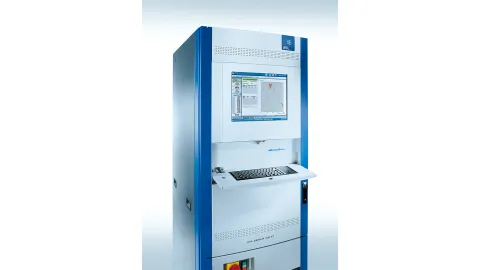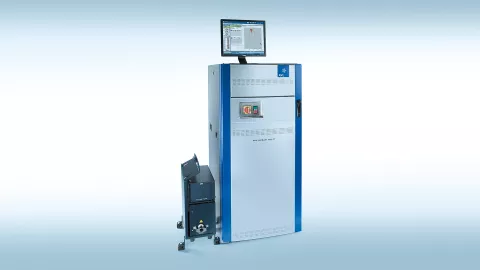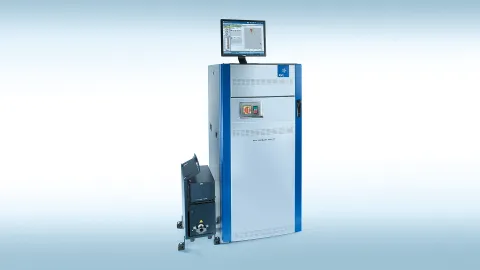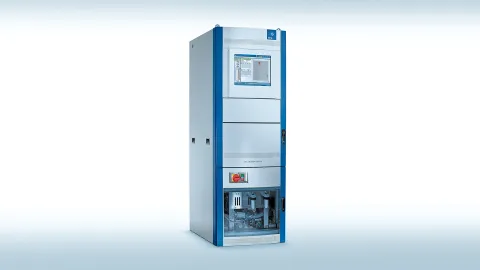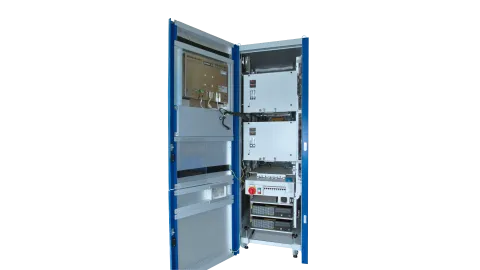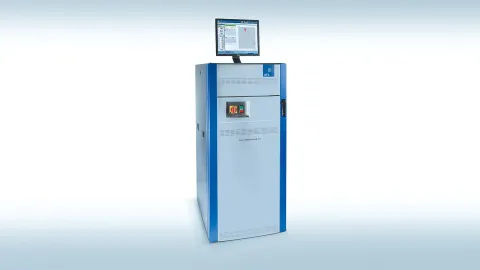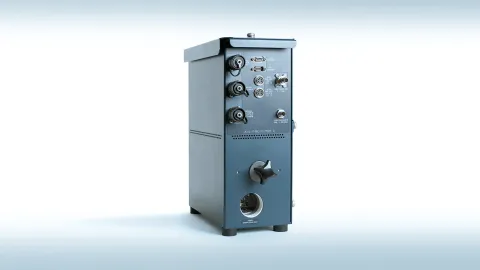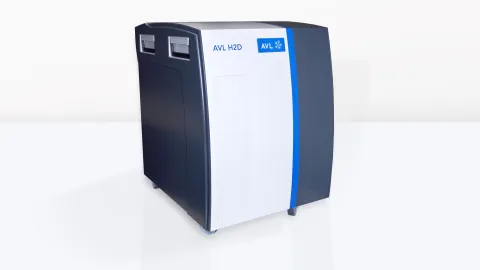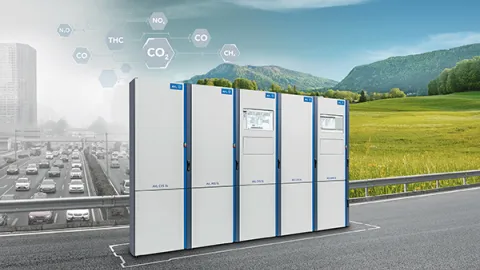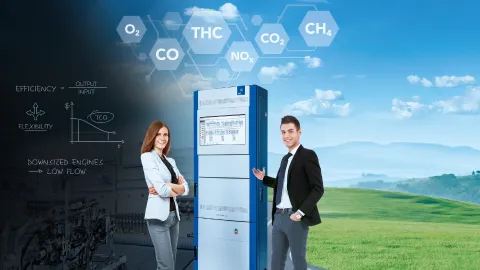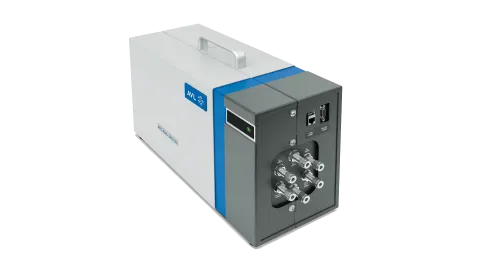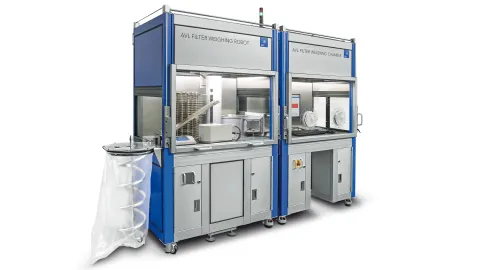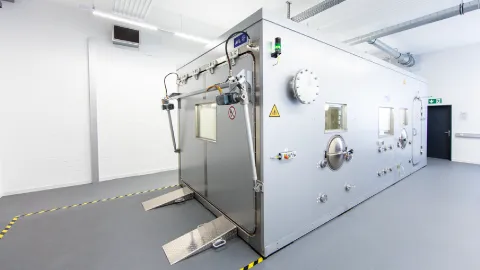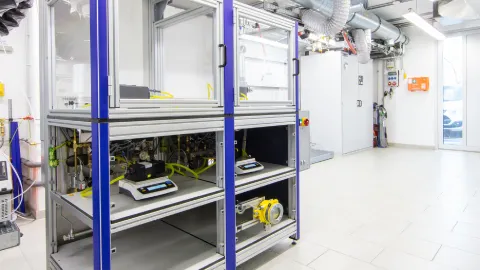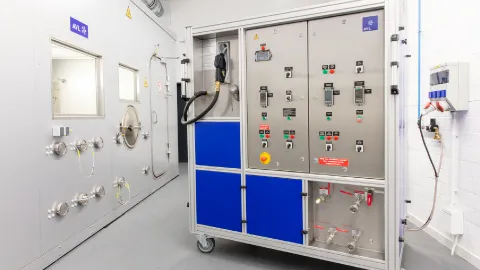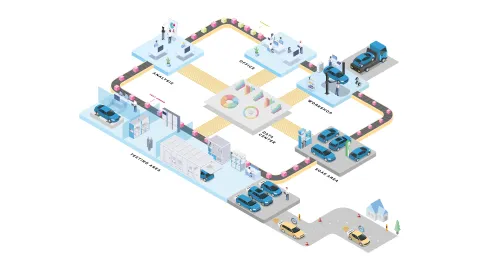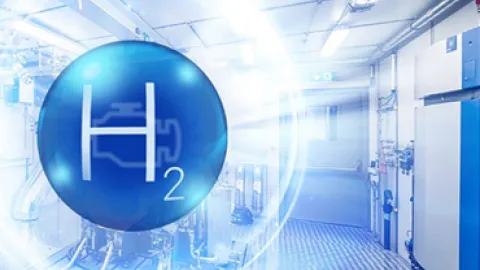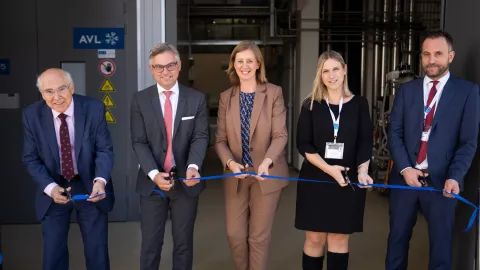In the ongoing quest for reduced-emission powertrains, exhaust gas aftertreatment systems are becoming increasingly complex. The introduction of dual stage SCR catalyst systems and the increased use of alternative fuels has heightened this complexity. In order to manage and reduce pollutants and emissions, a clear understanding is required of aftertreatment systems and the exhaust gas components involved. With the AVL SESAM i60 FT SII, we have created a tool that supports the user in gaining that knowledge for the following applications:

R&D and certification of modern heavy-duty engines with SCR technologies (Euro IV, V and VI), especially for the measurement of ammonia (NH3)
R&D and certification of all modern light-duty diesel engines with exhaust after treatment systems, e.g. for the measurement of N2O
General purpose exhaust emission measurement on engine and chassis dynamometer test cells
R&D of modern exhaust after treatment systems such as those featuring (Diesel Oxidation Catalyst (DOC), Selective Catalyst Reduction (SCR), Lean NOX Trap (LNT) .
Development and application of alternative fuels (H2, NH3, CNG, ethanol, methanol, bio-diesel, etc.)
R&D of various other applications such as fuel cells and hybrid drives
Thanks to the iGEM SESAM touchscreen control software, operation is easy and intuitive. Bench status, including all streams and analyzers can be viewed at a glance. The system provides legislation compliant support for Euro VI and EPA 40 CFR part 1065, including automated compliancy checks. Diagnostic functions can be performed automatically, which supports troubleshooting down to the sensor and valve level. The SESAM i60 FT SII is incredibly flexible making integration into your existing testbed automation system fast and painless thus adding to the value of this dynamic, high-end measurement system.
| Property | Unit |
|
Voltage supply |
230 / 200 / 120 / 100 VAC |
| Weight | 180 kg (standard cabinet) |
| Ambient temperature | 10 – 30 °C / 10 -40 °C (AC) |
| Relative humidity | 5 – 80 %, non-condensing |
| Pressure | 900 – 4000 hPa (13 – 58 psi) |
|
Measured gas components |
CO, CO2, H2O, NO, NO2, N2O, NH3, CH4, C2H2, C2H4, C2H6, C3H6, C3H8, C4H6, C2H5OH, CH3OH, CH3CHO, CHO, HCOOH, SO2, IC5, NC5, NC8, HNCO, HCN, COS, AHC, NOx, NMHC, HCD, HCG, HCE |
| Small Cabinet | 600 x 1345 x 1060 mm (w x h x d) |
| Large Cabinet | 670 x 1970 x 1240 mm (w x h x d) |
The SESAM i60 FT SII offers the dynamic, accurate and synchronous measurement of NO, NO2, N2O, NH3, CO, CO2, CH4 as well as alcohols, aldehydes and more within one device.
Fast Response Times
Very fast and accurate FTIR with 35 % faster response times at lower sample flow rates and online real-time measurement for data plausibility
Reduced Maintenance
Minimal number of mechanical moving parts guarantees highest testbed uptime and key components such as the laser and detector boast lifetimes in excess of four years
Highest Reliability on the Market
3 years warranty on the FTIR i60 and decades of AVL’s FTIR application experience gives you investment security
Easy to Use
Easy operation and flexible integration into the testbed automation system
Low Operating Costs
A low maintenance system means there is no need for regular calibration
Verified Accuracy
Every single FTIR comes with an individual gas calibration certificate
SESAM i60 FT SII Small
The small SESAM i60 FT SII cabinet includes the FTIR i60 spectrometer, optionally an FID analyzer for THC measurements, and a PMD analyzer for O2 measurements.
SESAM i60 FT SII Large / Dual
The large cabinet may contain an additional PMD analyzer for O2 measurements and/or an IRD analyzer for CO2 EGR measurements. Alternatively, the large cabinet can be equipped with two FTIR i60 spectrometers for dual stream applications providing simultaneous pre- and post-exhaust aftertreatment measurements.
SESAM i60 FT C
This is a streamlined version of the SESAM i60 FT SII for the measurement of the most important exhaust gas components when applying SCR exhaust after-treatment systems.
SESAM i60 FT D1
Is optimized for dilute measurements of nitrous oxides, ammonia, formaldehyde, acetaldehyde, ethanol and methanol according to e.g. ECE GTR-15 and future regulations (as EURO 7 / VII or China 7 / VII).
